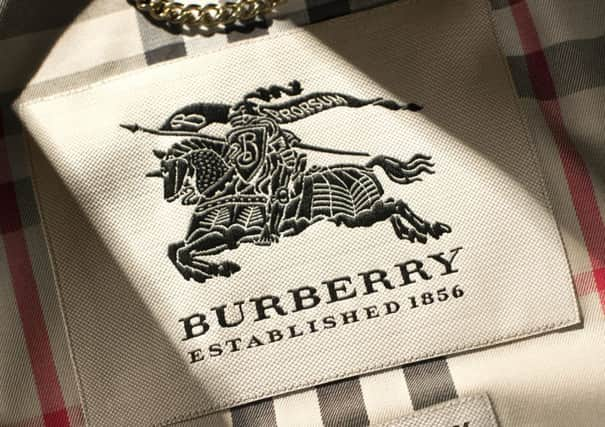Blackfriar: What was Burberry's strength has become a weakness


Mr Bailey, who found fame as the brand’s creative director – a role he still holds – faces difficult times following the slowdown in China, one of Burberry’s biggest markets.
Liberum analyst Tom Gadsby said the bulk of Burberry’s revenue comes from regions which are seeing the biggest slowdown in growth – Asia Pacific and the Americas.
Advertisement
Hide AdAdvertisement
Hide Ad“The main concern is what was a strength has become a weakness,” he said.
“They have very good global coverage, but that does mean that two-thirds of their sales are in areas of the market that are going backwards.”
With the share price languishing at three-year lows, Mr Bailey faces a sharp slowdown in the global luxury market. He has largely left his finance chief Carol Fairweather to look after the finances, in much the same way as his predecessor Angela Ahrendts did.
He has also stuck closely to Ms Ahrendts’ strategy.
Analysts are now keen to hear how Mr Bailey sees the future.
Advertisement
Hide AdAdvertisement
Hide Ad“He has to step up and he has to say: That was the agenda, but this is my agenda. This is what I stand for,” said Luca Solca, head of luxury goods at Exane BNP Paribas.
Credited with helping transform the 160-year-old Burberry from a chav brand into a global luxury powerhouse, Mr Bailey’s dual role could come under scrutiny when Burberry releases its key Christmas quarterly trading update today.
Burberry, whose trench coats and cashmere scarves took Asia by storm, reported a sharp sales slowdown in Hong Kong and China in October, leading the FTSE 100 company to miss sales growth forecasts and warn of an increasingly challenging environment.
Other luxury groups that expanded rapidly in mainland China such as Gucci and LVMH have also suffered from the economic uncertainty there, but Hong Kong and Chinese shoppers account for up to 40 per cent of Burberry’s global revenue.
Advertisement
Hide AdAdvertisement
Hide AdOne of the best paid CEOs in Britain, Mr Bailey is a hugely popular figure in the fashion industry.
He also benefits from the fact he is still held in huge regard by investors for his work alongside former CEO Ms Ahrendts.
In the four and a half years that he solely held the chief creative officer role he won multiple industry awards and the share price rose almost 200 per cent.
His latest menswear collection on Monday featured a younger, sportier feel, with models wearing oversized coats, tailored trousers and zipped tops.
Advertisement
Hide AdAdvertisement
Hide AdThose who have worked with Mr Bailey say he is known for his love of teamwork, choosing to encourage collaboration among team members.
The problem for Mr Bailey is that despite the downturn in China, there are no other obvious markets to enter.
Continental Europe faces its own economic problems in addition to worries about the migrant crisis and in the aftermath of the horrific Paris attacks, global tourists are having second thoughts about visiting leading European cities.
Richard Hunter, head of equities at Hargreaves Lansdown Stockbrokers, said that for the medium and longer term, Asia is very much a growing market.
Advertisement
Hide AdAdvertisement
Hide Ad“In 10 to 15 years, China could be the world’s largest economy, overtaking the US.
“Of course there are problems with the China slowdown. Chinese consumers are battening down the hatches, but we are still looking at growth,” he said.
Mr Hunter makes a good point. China may well suffer for a few years, but long term, it is on a fast trajectory.
Mr Bailey needs to stick to his guns and keep focusing on Asia, whatever analysts say.
However, in a bid to overcome the problems in China, he will probably need to contain costs and that is likely to be a key feature over the coming months.